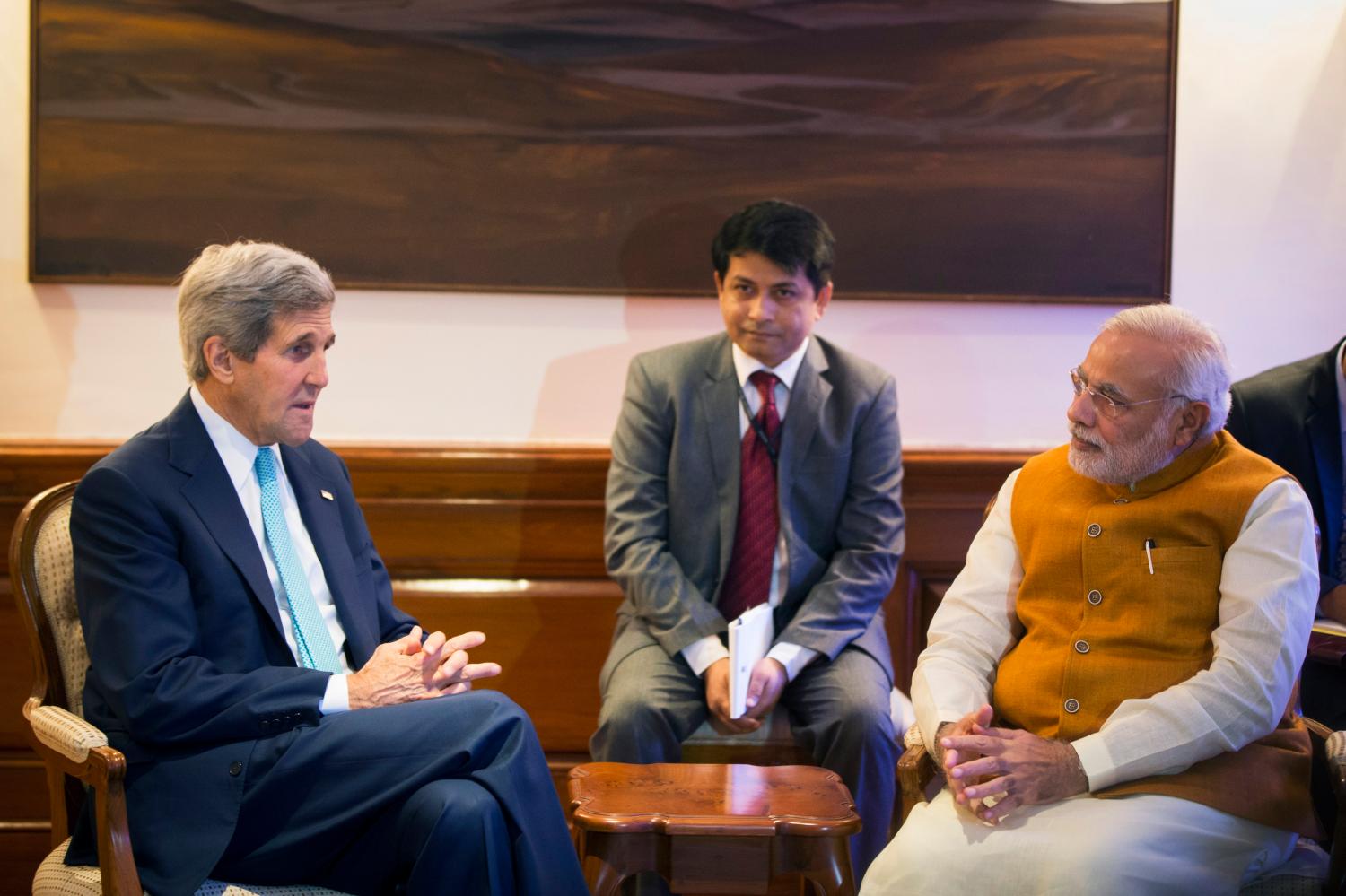Content from the Brookings Institution India Center is now archived. After seven years of an impactful partnership, as of September 11, 2020, Brookings India is now the Centre for Social and Economic Progress, an independent public policy institution based in India.
In this India-U.S. Policy Memo, Tanvi Madan and Strobe Talbott consider how India and the Modi government are viewed in the United States. They reflect on the state of the India-U.S. relationship, outlining the opportunities and challenges that lie ahead.
The first time an Indian prime minister met with an American president—Jawaharlal Nehru and Harry Truman in 1949—there were two items on the agenda: Kashmir and China. In the years that followed, India-U.S. relations waxed and waned, with more phases of the latter than the former. Fortunately, thanks to efforts by successive governments in New Delhi and Washington over the past two decades, the two democracies have left the days of estrangement behind and have moved to a phase of more consistent engagement. When Prime Minister Modi and President Obama meet in September, they will have a crowded and diverse agenda. The Table of Contents of this policy brief, with memos by our Brookings colleagues in New Delhi and Washington, makes clear why: the sheer breadth of the India-U.S. relationship. It involves more bilateral interaction than ever before—not just at the federal government level, but also at the state and local government levels, as well as between the two countries’ militaries, private sectors and civil societies, and their citizens. And it has taken on global significance with the emergence of India as a key member of the G-20 and the BRICS.
The Obama administration sees the recent election of the majority government in India led by Prime Minister Modi as an opportunity to take the relationship to the next level. The American president would like to see the “strong, developed, and inclusive India that actively engages with the global community” that Prime Minister Modi has promised. The administration has repeatedly asserted that even though India and the U.S. will not always agree, India’s rise is unquestionably a net positive for the prospects for peace, progress, and prosperity in the 21st century.
This sentiment has support in many parts of the United States and across what are in other ways contentious party lines. In fact, the importance of strong ties with India is one of the few foreign policy issues about which one can make such an assertion. Many in the private sector also see India’s rise as an opportunity. There is hope that there will be a better business climate in India and that the new Indian government will tackle economic reforms that will, in turn, reinvigorate the Indian economy. Yet in government and business, there is also concern that some political and bureaucratic obstacles will prove insurmountable, and there are questions about whether Indian potential can be translated into performance. Nonetheless, in the United States, just as in India, there is hope that the Modi government can deliver. There is also optimism in Washington that the overall India-U.S. relationship can be broadened, deepened, and re-energized. This is the reason for high-level U.S. engagement with and on India this summer, despite the number of other urgent foreign policy crises and issues that are demanding the Obama administration’s attention.
As the memos in this policy brief outline, there are opportunities for cooperation in fields ranging from economics to energy, climate change to cyber-governance, counterterrorism to counterproliferation, defense to development, health to higher education, and immigration to the international order. The two countries can also work together in identifying commonalities of interest in South Asia, particularly with regard to Afghanistan and Pakistan.
In the Asia-Pacific, Europe, and West Asia, there is a growing need for India and the U.S. to increase their understanding of each other’s interests and policies. As the Modi government assesses the foreign policy landscape and sets its own course, its perception of U.S. strategy will be a factor. Hence the “scene-setters” offered in this policy brief, which outline how the U.S. sees the Asia-Pacific, particularly China and Japan, and West Asia, particularly Iran. It also includes a glimpse of how the European Union, a partner to both India and the U.S. views its partnership with India—one that will have an impact on India-U.S. relations.
The memos also acknowledge the obstacles that lie ahead for the relationship—while exploring ways of managing or mitigating them.
The overarching challenge that lies ahead is translating the opportunities in the relationship into outcomes, the potential into performance and progress. This will require action on both sides; as the Hindi saying goes, taali ek haath se nahin bajti (you can’t applaud with one hand). It will also call for compromises, as well as patience with and understanding of the other side’s constraints. Finally, it will require giving each other the benefit of the doubt when things get tough, managing differences, and seeing each other as part of the solution and not just part of the problem—at the bilateral, regional, multilateral, and global levels.










